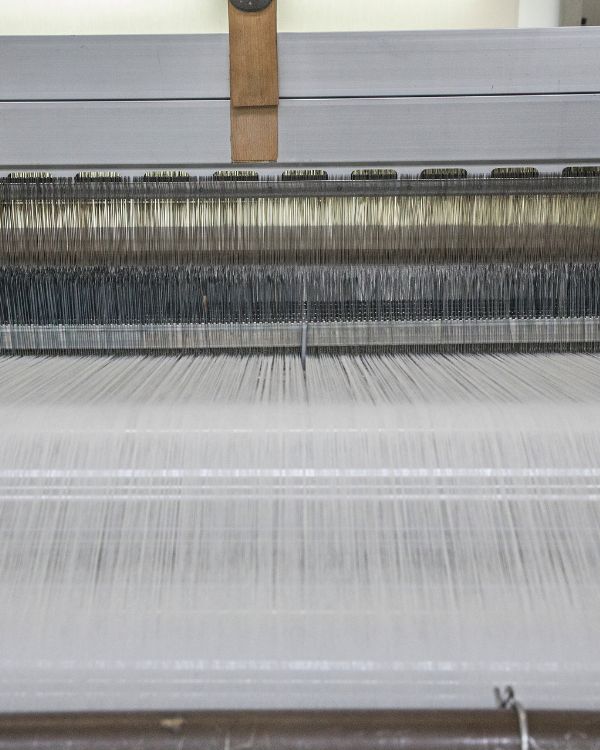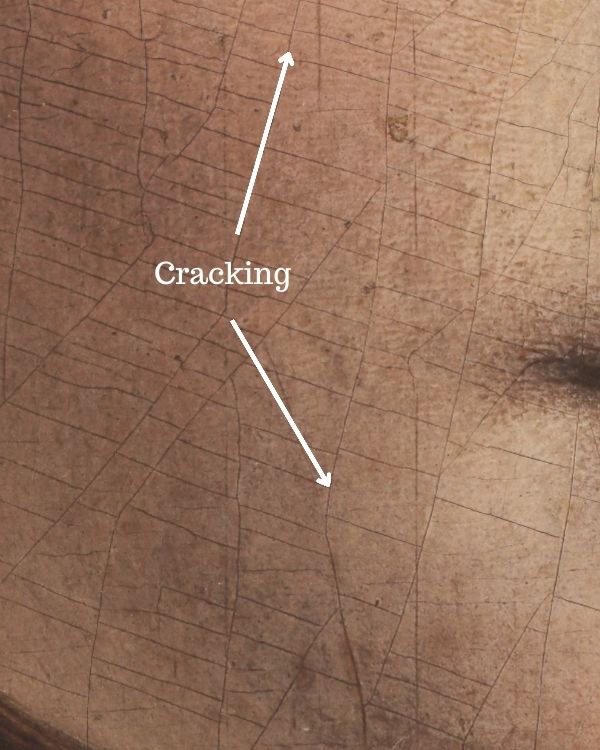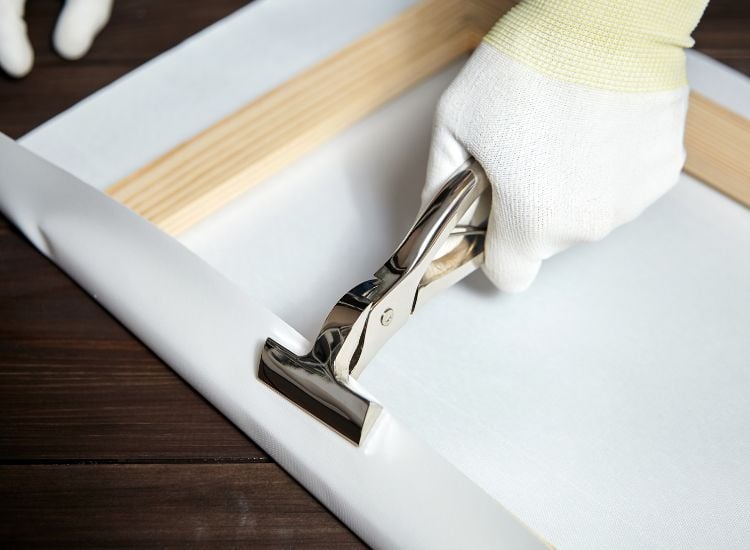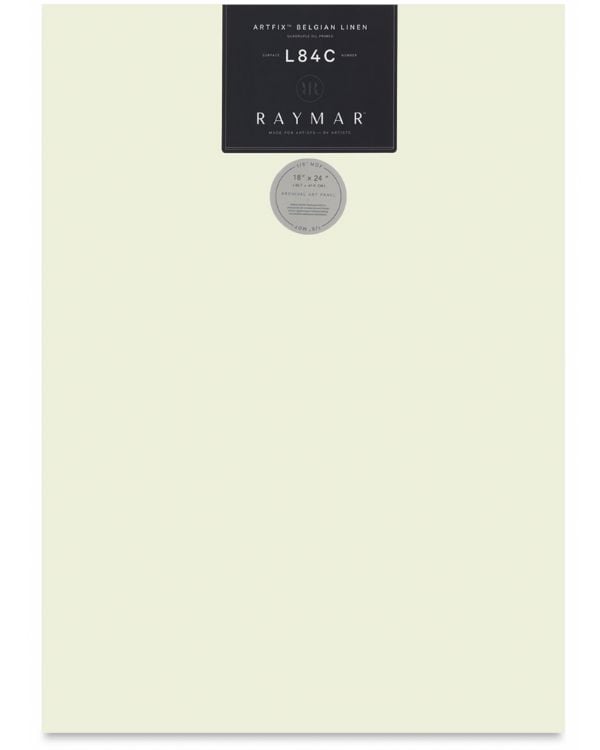When painting on canvas the material of the surface you use is just as important as the paints you choose. It heavily influences the overall look and feel of your painting − as different surfaces interact very differently with paint.

Canvas, is a timeless choice to use as a painting surface. However, not all canvas is created equal. Linen canvas offers superior benefits over cotton canvases, and knowing the difference could give your artwork the best surface to shine on. Here we explain what linen is, why linen canvas is superior to cotton canvas, and the importance of using the right type of primed linen for the best results.
Why painting on linen canvas is best
Linen canvas has several advantages over other types of canvas. First and foremost, linen is incredibly strong and durable. It can withstand heavy paint application, erasing, and even scraping without becoming brittle or cracking. It also has a high level of tensile strength, meaning it won’t stretch or sag over time.

Cotton canvas on the other hand tends to be fluffy, soft, and stretches easily. These qualities do not make it as durable and long lasting as linen canvas.

Archival quality of linen
Linen retains its natural oils, which helps to keep the fabric from becoming brittle and preserves the fiber’s flexibility. When the material is more flexible this helps a painting age well and crack much less. Though some degree of aging and decay is inevitable – many of us have seen paintings with cracking that are hundreds of years old in museums. However, with a linen surface it will age much slower than with cotton canvas.

Surface texture of linen vs cotton canvas for painting
Another benefit of painting on linen vs cotton canvas is its unique texture. It is characterized by an uneven surface texture as the flax fibers it is made from vary in length and thickness.

This surface texture can still be seen through layers of paint which is desirable for painters as it imparts a sense of depth in the artwork. The linen’s roughness also gives it a certain grip which helps to keep paint on the canvas so that it doesn’t run or blend together too quickly.
Different texture levels of linen for painting

There is a variety of different linen textures available that are suitable for different types of painting. For example, a small portrait painting might be more suitable on a very finely textured linen. A smaller painting with more detail is best for something with finer tooth. While a very large landscape painting, might be most suitable on a rougher textured surface. As you will likely be using more paint and broader strokes.

Differences in surface texture of cotton canvas

Cotton canvas has a much more predictable and consistent surface texture compared to linen. It does not grip the paint the same way as linen does as it does not have as much tooth. The surface texture will not be as interesting and unique as a linen surface. Also, a cotton canvas surface can sometimes be a little too slippery – especially if it has been over gessoed.
The cost of linen canvas vs cotton
Though linen is far superior to cotton canvas in many ways. There is one area that cotton canvas beats linen at every time – the price point.

For a more superior painting surface you will have to pay for it. Personally, I started out learning how to paint on cotton canvas. Then eventually I switched to linen. However, I do wish that I had switched much earlier… Once making the switch I could tell that I could paint much better on linen than cotton canvas.

You will have to determine for yourself how much you are comfortable spending on your painting surfaces. You can always purchase a small sample size amount and experience the benefits for yourself to determine how much you want to invest! However, keep in my mind cost isn’t always monetary − so it is also worth considering is the quality of your painting surface worth the time and effort your putting into your work?
How to prime linen before painting

When it comes to priming linen canvas, there are two main types of primers: oil and acrylic. Oil primers have been used for centuries and have a reputation for their quality and longevity. They provide a strong and durable surface that can last for decades. On the other hand, acrylic primers/ gesso are a newer development, and they offer a faster drying time and a non-toxic option for artists.

One thing to keep in mind when using acrylic primed linen or cotton canvas is that it can absorb your paint a little more making it dry a little lighter in value than what you initially painted. It is important to keep this in mind! An oil primed surface is not as absorbent and will keep your colors more as they were originally.

Acrylic primer for painting with acrylics
Also, if you are painting with acrylic paints then you need to paint on a surface primed with acrylic gesso. For an oil painting you can paint on either an acrylic or oil primed surface.
Preparing linen for painting on canvas

Once you’ve chosen your linen canvas and primed it. It is then time to create your imprimatura and start painting! One thing to note is that you’ll need to prepare your canvas before applying any paint. This involves applying an initial coat of gesso to prime the surface and create a barrier between the paint and the canvas fibers. Doing so, ensures that your artwork is protected from any impurities in the linen and will last for years to come.
Mounting or stretching your canvas for painting
It is a personal decision, whether to mount or stretch your canvas over stretcher bars. Personally, I usually mount my paintings down on a larger board with masking tape. When my painting is done, I then permanently mount it onto a board that is the exact size of my painting with acid free PH neutral glue. This makes the surface more durable, and provides options for displaying and protecting the work.

Another option is to use wooden stretcher bars as a support. Stretching a canvas requires stretching the fabric over wooden stretchers. The fabric is nailed tightly to the back of the stretcher bars. This helps keep your canvas taut and prevents it from sagging.
Mounting canvas to a rigid wood panel works well for small paintings. If you are working on something large, then it is much more practical to stretch it over wooden stretchers. This allows much more flexibility to ship or store the painting.

Whichever method you choose, it is important to use the right materials. Make sure that your canvas or board is acid free so that it will not fade over time. Also make sure that your glue or nails are of good quality, as this can help your artwork last for many years to come.
Taking care of your painting on canvas

Caring for your finished painting on linen canvas is also important. Keep it out of direct sunlight, as this can cause fading, and avoid touching the surface with bare hands, as this can transfer oils and dirt onto the canvas. If your painting needs cleaning, use a soft, lint-free cloth and a mild cleaner specifically designed for artwork.
Linen options for painting on canvas
There are a few different options available from budget friendly to expensive premium grade linen. You can explore which painting surface options suit your needs the best. You can always test out a small sample amount before committing to something more costly.
Centurion oil primed linen

A great budget option for testing out oil primed linen, is using the Centurion oil primed linen pad. It comes in sheets of pre-primed linen that you can easily mount onto a board and test out.
You could also try out the acrylic primed option if you prefer and or are working with acrylic paints!
Belgian stretched linen canvas on oil primed panel
Another great option available, is to get pre-primed linen that is already mounted on a panel board. This provides a rigid surface for you to paint on.

You can find a variety of different ones available from more expensive to good budget options.
You can also find pre stretched oil primed linen painting surfaces. Both of these options save you a lot of time as they eliminate the preparation.
Claessen oil primed linen
The Claessen oil primed linen, is my very favorite painting surface that I use for most of my own work. From Belgium, it is of very high quality and comes in a variety of different surface textures − from very smooth to rough.

Unprimed linen
For a more budget friendly option you can get unprimed linen canvas for painting and then prime/ gesso it yourself! You could use acrylic gesso or an oil based primer.

You could get a more expensive Belgian linen canvas for painting or there are more budget options available as well.
Longevity of paintings on linen
Linen canvas is the best choice to create high quality long lasting work. Its durability, strength, and smooth texture make it the superior option over cotton canvas, while the choice between oil and acrylic primers allows for flexibility in artistic choice. It may cost more than other materials, but it will stand the test of time and be a better investment for all the time you spend on your work.
Personally, I wish that I had started painting on linen canvas much sooner than I did. So, I encourage you to try it out for yourself and see the difference it could make in your work.
What painting surface do you most often use? What is your favorite? I would love to hear in the comment section below!






4 thoughts on “Linen vs Cotton: Unlock the Benefits of Painting on Linen Canvas”
Your article caught my eye as I LOVE to paint on linen. But then I couldn’t find it in local art stores and tried Gesso boards which I really like. Now they are not being carried either. However, I can always order on the internet. Thanks for your information as I WILL look for primed linen pads in the 11 x 14 size. Makes perfect sense for most all sizes needed. Again, thank you Elizabeth for sharing this info!!
Hi Bonnie, You are very welcome! Am glad this was helpful and that you enjoy painting on Linen – it is such an amazing painting surface. Yes, online is likely the best resource for getting good quality linen. Am sure you will be able to find some great 11 x 14 primed linen pads!
Thanks for the information, Elizabeth. Very interesting. I usually use cotton canvas surfaces however I have used mounted Belgian Linen too. It is a finer “tooth” and nice to use.
I still go to the cotton stretched and/or mounted for most of my work because of cost. This article was very informative and complete. I will try linen again!
Hi Sandy, That is wonderful – glad that you will try linen again. It really is such a wonderful surface and so enjoyable to use!